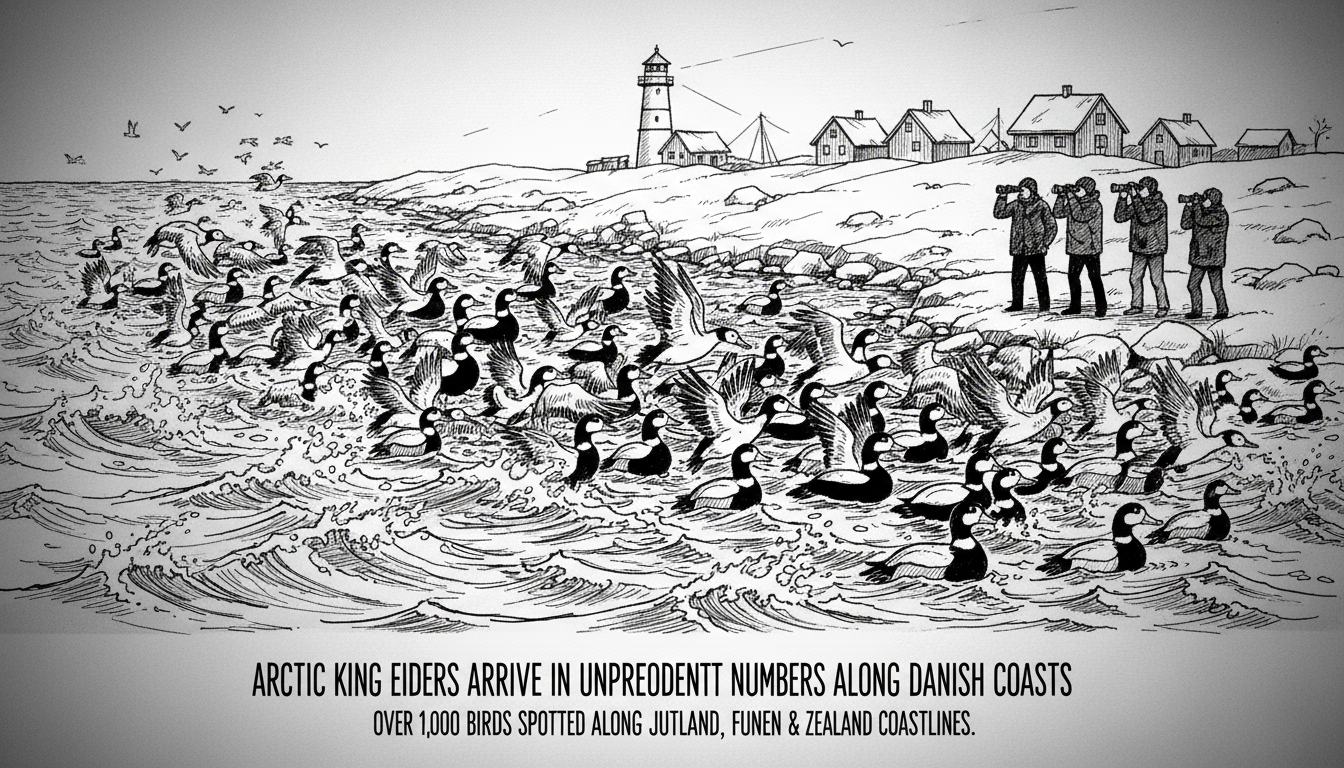Hundreds of Arctic king eiders have appeared in Danish coastal waters in an unusual winter phenomenon. Birdwatchers report sightings of 300-400 individual birds, but experts believe the actual number likely exceeds 1,000.
Biologist Joakim Matthiesen from the Danish Ornithological Society explained the situation. He said these sea ducks normally breed in millions across Greenland and Svalbard. During winter months, they typically migrate to open sea areas like the North Sea, Skagerrak, and Kattegat to feed.
What makes this year exceptional is their presence in Denmark's inner coastal waters. Matthiesen described this as a typical winter occurrence where strong westerly winds push ocean-dwelling birds toward shorelines. The birds may have traveled farther inland searching for food sources or been driven by powerful storm winds.
King eiders remain compact birds roughly the size of starlings. They feed primarily on crustaceans including krill and water fleas. Bird enthusiasts can spot them diving for food in coastal waters.
The best viewing locations currently include Jutland's coastline and the northern shores of Funen and Zealand. Matthiesen noted the birds will likely stay as long as food remains available in these areas.
This influx represents a temporary seasonal pattern rather than a permanent change. Come spring, the king eiders will return to their Arctic breeding grounds. The phenomenon offers a rare opportunity for Danes to observe these typically ocean-going birds up close.
Winter bird migrations often bring surprises to Nordic coastal regions. Changing weather patterns and food availability can redirect traditional flight paths. The king eider sighting follows similar unusual bird observations along Norway's coast last winter.
Denmark's geographical position makes it a natural crossroads for Arctic and North Sea bird migrations. The country's extensive coastline provides important resting and feeding areas for numerous seabird species during harsh winter months. These recent sightings highlight Denmark's role in broader Arctic migration patterns.
Local birdwatching groups have reported increased activity along coastal areas. Enthusiasts welcome the chance to observe these striking black and white ducks with their distinctive orange forehead shields. The birds' unexpected presence brings excitement to Denmark's winter wildlife scene.

